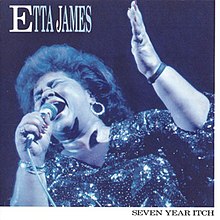알파 무스카에
Alpha Muscae| 관찰 데이터 에폭J2000.0에쿼녹스J2000.0 | |
|---|---|
| 콘스텔레이션 | 무스카 |
| 적경 | 12h 37m 11.01789s[1] |
| 적위 | – 69° 08° 08.0332°[1] |
| 겉보기 등급(V) | +2.69[2] |
| 특성. | |
| 스펙트럼형 | B2 IV–V[3] |
| U-B 색지수 | −0.854[2] |
| B-V 색지수 | - 0.219[2] |
| 변수 유형 | β Cep[4] |
| 아스트로메트리 | |
| 반지름 속도(Rv) | +13[5] km/s |
| 고유운동(μ) | RA: - 40.20[1] mas/년 Dec.: - 12.80mas[1]/년 |
| 시차()) | 10.34 ± 0.11 mas[1] |
| 거리 | 315 ± 3y (97 ± 1 pc) |
| 절대 등급(MV) | – 2.2[6] |
| 세부 사항 | |
| 덩어리 | 8.8±0.1[3] M☉ |
| 반지름 | 4.8[7] R☉ |
| 광도 | 4,000[6] L☉ |
| 표면 중력(log g) | 4.06gs[6] |
| 온도 | 21,400[6] K |
| 회전 속도(v sin i) | 114[8] km/s |
| 나이 | 18.3±3.2[3] 미르 |
| 기타 명칭 | |
| 데이터베이스 참조 | |
| 심바디 | 데이터. |
α Muscae에서 라틴어화된 α Muscae는 남쪽 극주변 무사자리에 있는 별입니다.겉보기 등급은 +2.[2]7로 별자리에서 가장 밝은 별이다.이 별까지의 거리는 [1]지구에서 약 315광년(97파섹) 떨어진 것으로 추정되는 시차 측정치를 사용하여 측정되었습니다.
B2 IV-V [3]등급의 항성 분류로 이 별은 중심핵에 있는 수소의 공급이 고갈됨에 따라 태양과 같은 별의 주계열에서 벗어나 준거성으로 변하는 과정에 있는 것으로 보인다.질량은 거의[3] 9배, 반지름은 거의[7] 5배로 태양보다 크다.이 별은 21,400 [6]K의 유효 온도에서 태양보다 약 4,000배[6] 높은 광도를 방출하고 있으며, B형 별의 [10]청백색을 띠고 있습니다.
세페우스자리 알파는 세페우스자리 베타 변광성으로 보인다.텔팅과 동료들은 2006년에 [4]발표된 고해상도 분광학 연구에서 스펙트럼에서 규칙적인 맥동이 발견되었기 때문에 높은 신뢰도를 가진 세페이의 베타라고 보고했지만, 스탄코프와 핸들러(2005)는 이 행성을 은하 베타 세페이 [8]별 카탈로그에 좋지 않거나 거부된 후보로 등재했다.이 행성은−1[8] 114kms의 회전속도로 빠르게 회전하고 있으며 나이는 약 1800만 [3]년으로 추정된다.
이 별은 전갈자리-센타우루스자리 OB 성협에 있는 센타우루스자리 하부-크룩스 하위 그룹에 속하며,[6] 태양과 함께 움직이는 무거운 별들의 성협 중 가장 가까운 성협이다.무스카에 알파는 초속 10km의−1 특이한 속도를 가지고 있는데, 이는 높지만 도망가는 [3]별이라고 하기에는 충분하지 않다.
레퍼런스
- ^ a b c d e f van Leeuwen, F. (November 2007), "Validation of the new Hipparcos reduction", Astronomy and Astrophysics, 474 (2): 653–664, arXiv:0708.1752, Bibcode:2007A&A...474..653V, doi:10.1051/0004-6361:20078357, S2CID 18759600
- ^ a b c d Gutierrez-Moreno, Adelina; Moreno, Hugo (June 1968), "A photometric investigation of the Scorpio-Centaurus association", Astrophysical Journal Supplement, 15: 459, Bibcode:1968ApJS...15..459G, doi:10.1086/190168
- ^ a b c d e f g Tetzlaff, N.; Neuhäuser, R.; Hohle, M. M. (January 2011), "A catalogue of young runaway Hipparcos stars within 3 kpc from the Sun", Monthly Notices of the Royal Astronomical Society, 410 (1): 190–200, arXiv:1007.4883, Bibcode:2011MNRAS.410..190T, doi:10.1111/j.1365-2966.2010.17434.x, S2CID 118629873
- ^ a b Telting, J. H.; et al. (June 2006), "A high-resolution spectroscopy survey of β Cephei pulsations in bright stars", Astronomy and Astrophysics, 452 (3): 945–953, Bibcode:2006A&A...452..945T, doi:10.1051/0004-6361:20054730
- ^ Evans, D. S. (June 20–24, 1966), Batten, Alan Henry; Heard, John Frederick (eds.), "The Revision of the General Catalogue of Radial Velocities", Determination of Radial Velocities and Their Applications, Proceedings from IAU Symposium No. 30, University of Toronto: International Astronomical Union, 30: 57, Bibcode:1967IAUS...30...57E
- ^ a b c d e f g de Geus, E. J.; de Zeeuw, P. T.; Lub, J. (June 1989), "Physical parameters of stars in the Scorpio-Centaurus OB association", Astronomy and Astrophysics, 216 (1–2): 44–61, Bibcode:1989A&A...216...44D
- ^ a b Underhill, A. B.; et al. (November 1979), "Effective temperatures, angular diameters, distances and linear radii for 160 O and B stars", Monthly Notices of the Royal Astronomical Society, 189 (3): 601–605, Bibcode:1979MNRAS.189..601U, doi:10.1093/mnras/189.3.601
- ^ a b c Stankov, Anamarija; Handler, Gerald (June 2005), "Catalog of Galactic β Cephei Stars", The Astrophysical Journal Supplement Series, 158 (2): 193–216, arXiv:astro-ph/0506495, Bibcode:2005ApJS..158..193S, doi:10.1086/429408, S2CID 119526948
- ^ "HD 109668 -- Variable Star of Beta Cep type", SIMBAD Astronomical Database, retrieved 2007-01-29
- ^ "The Colour of Stars", Australia Telescope, Outreach and Education, Commonwealth Scientific and Industrial Research Organisation, December 21, 2004, archived from the original on November 8, 2004, retrieved 2012-01-16



